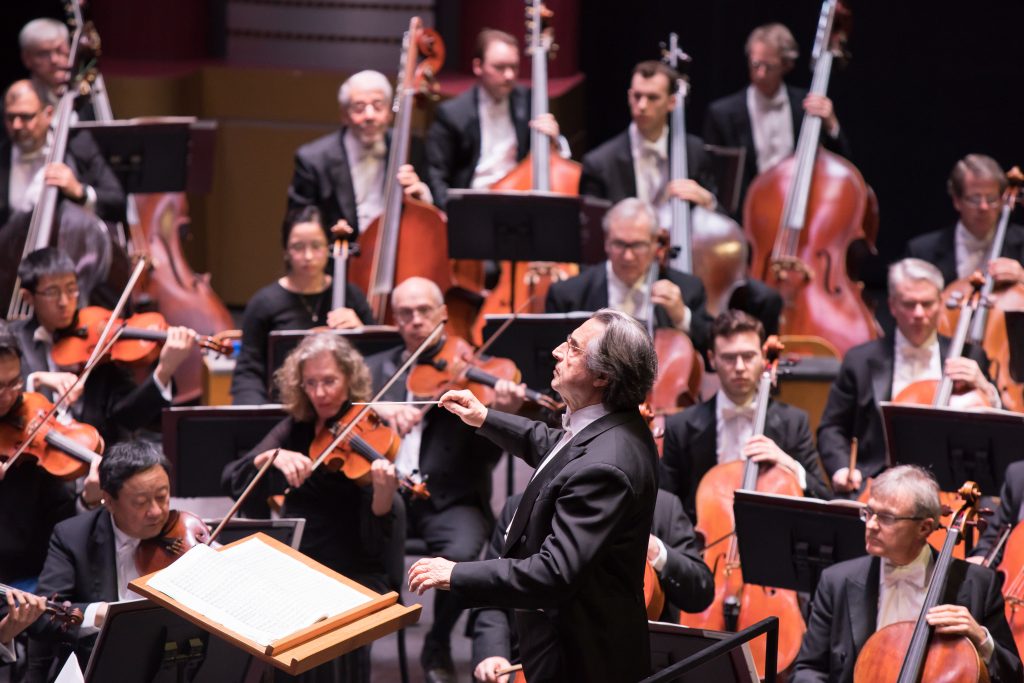
By Dennis D. Rooney
The audience in the Kravis Center’s Dreyfoos Hall to hear the Chicago Symphony Orchestra on Tuesday night seemed the usual assortment of mostly middle-aged and older listeners.
However, I do hope that some children and young people attended so that they might experience the sound of a major orchestra under an eminent conductor in music of Ludwig van Beethoven, counted among the titans of the classical orchestral repertoire. The program had three works: The Leonore Overture No. 3 (Op. 71a); the Symphony No. 5 (in C minor, Op. 67); and the Symphony No. 7 (in A, Op. 92).
What was heard was a musical experience not to be replicated by a recording or live performance by the divers orchestras that usually dispense such works in South Florida. Now in his ninth season as music director, Riccardo Muti has lightly imposed his personality on the CSO. It plays with refinement and vigor, and utilizes a wide dynamic spectrum. There is an audible esprit de corps that comes with long association and collegial familiarity.
Muti is not a “choreographic” conductor. His podium gestures communicate more to the players than the audience. His approach is meticulous but not Kappellmeisterisch. He values clarity and beauty of tone more than sensuousness. He does not bring the nervous tension to this music that some conductors (notably Toscanini or Solti) have.
In the Leonore Overture, all the elements were in superb balance and the reading was musically unexceptionable, but some of the dramatic touches Beethoven built into it were a bit underplayed. That may have been a deliberate choice in view of the fierce drama inhabiting Beethoven’s Fifth. I found its first and third movements to be the most engaging musically, although the violas and cellos in the opening of the Andante con moto second movement played with striking suavity and, coming later, the famous fortissimo unison low “C” played by the seven double basses sounded like a 32-foot organ pedal. As for the finale, its inexorable triumph sweeps all before it.
The second half was devoted to the Seventh Symphony, a work whose popularity at times annoyed its composer. Richard Wagner characterized the finale as “the apotheosis of the dance,” and each of its four movements is dance-like in a different rhythm. Another salient feature is the prominent horn sonority throughout in the bright key of A major. The Allegretto second movement explores expressive intensity, (but its steady rhythmic tread can be danced to, and I recall the parents of a school friend demonstrating their skill at the rumba while we listened to the music on a recording).
The jolly scherzo and rustic trios of the third movement were played, as most conductors prefer, more slowly than the composer’s indicated metronome markings, while the finale was a fast Allegro con brio, parts of which sounded too aggressive to my ears, in the bad old manner of Georg Solti at his most domineering. However, I suspect that for me much of this music has passed its listen-by date. The playing of the Chicago Symphony Orchestra was what made the event and as an encore they rewarded the audience with a virtuoso bon-bon: Brahms’s Hungarian Dance No. 1.